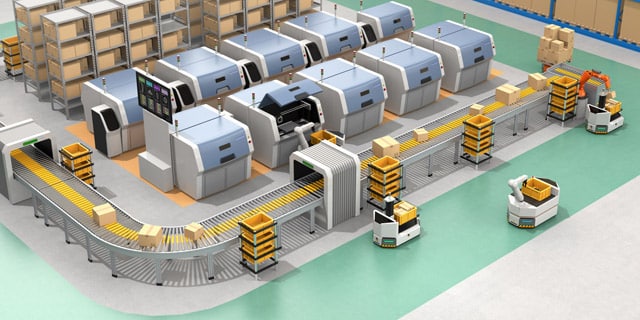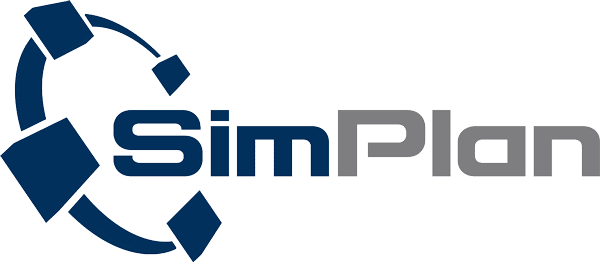Fast commissioning of PLCs through virtual model
Very often, corresponding plant concepts are developed in a concept phase and are developed and detailed step by step until a logical sequence and the material flow are established. These logical sequences have to be converted into a corresponding control system for the real system. The experiences and specifications of the “simulator” can be passed on to the development of the control system, which implements them in the form of e.g. PLC code.
The challenge in developing control systems is that testing functionality and ensuring quality is often only possible in interaction with a real physical system. This is where the existing simulation model can get a Second Life.

With the mapping of the material flow and the digital mapping of the physical components, the existing simulation model represents a digital twin of the physical components, so that the control system under development can safely take over the control of the model.
Technically, the internal control of the simulation model is switched off so that it can be used as an emulation model for virtual commissioning. With the help of the TIA Portal and modules such as PLCSimAdvanced (when using Plant Simulation), PLC codes can now be commissioned virtually and the behavior can be followed visually live in the digital model. Functional sequences can thus be quickly checked and statistics recorded in order to optimize the controls and find errors in advance.
Depending on the components and the level of virtual commissioning, other topics such as the behavior of safety devices and inverters (e.g. with the SIMIT product) can also be simulated and status displays or operating elements (HMI) emulated (e.g. with WinCC).
With this fully comprehensive simulation model of the plant, training of users and operators can thus be carried out in addition to PLC commissioning. In the process, targeted control or error scenarios can also be brought about with the help of the simulation model.
